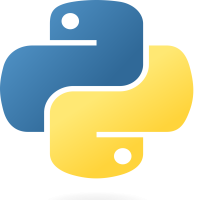
Python - Type Casting
11-Jan-2024Explore the concept of type casting in Python, understanding how to convert data from one type to another. Enhance your programming flexibility by mastering this essential skill.
Understanding Python Type Casting
Python's dynamic typing allows variables to change their data type during runtime through a process known as "Type Casting." In this article, we explore the basics of Python type casting and how it can be effectively used in programming.
Type casting involves changing the data type of a variable from one to another. Python supports both implicit and explicit type casting :
- Implicit Type Casting (Coercion) : Automatically occurs, usually when a higher-precision type is assigned to a lower-precision variable.
- Explicit Type Casting (Conversion) : Developers can manually convert a variable from one type to another using built-in functions.
Built-in Type Casting Functions
Python provides several built-in functions for type casting :
int(): Converts to an integer.float(): Converts to a floating-point number.str(): Converts to a string.bool(): Converts to a boolean.
Examples :
Examples of both implicit and explicit type casting:
# Implicit Type Casting integer_number = 5 # Type Integer float_number = 3.14 # Type Float result = integer_number + float_number # Integer implicitly cast to a float result = 8.14 # Output
# Explicit Type Casting # Converting a float to an integer float_number = 3.99 integer_number = int(float_number) # Converting an integer to a string number = 42 number_as_string = str(number) # number_as_string ="42" # Converting a string to an integer numeric_string = "123" numeric_integer = int(numeric_string) # numeric_integer = 123
Conclusion
Understanding Python type casting is crucial for writing flexible and readable code. Whether implicitly handled by the interpreter or explicitly implemented by the developer, type casting enables smooth transitions between different data types, enhancing the versatility of Python code.


